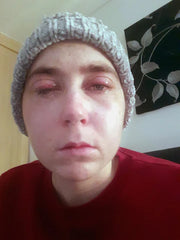Here are nine facts about the state of Dry Eye Disease in the UK (though the situation is paralleled in other countries).

These facts are based on information published by the NHS and the UK Association of Optometrists. Also on the results of an annual survey of the current state of Dry Eye Disease in the UK published in September 2022 by Théa UK.
- Dry Eye is one of the commonest eye conditions.
- There is currently no cure for dry eye disease.
- Dry eye is often undiagnosed and misdiagnosed.
- While the incidence of dry eye disease used to be more prevalent in the over 50s and in women rather than men, it is now affecting younger age groups faster and a higher percentage of sufferers are men.
- Since the Covid pandemic, awareness and incidence of Dry Eye Disease has increased, with most respondents blaming longer screen time through more home working.
- Diagnoses for Dry Eye have doubled since the previous year
- Many people who have been diagnosed with Dry Eye are failing to adapt their lifestyle to mitigate it (for example not reducing daily screen time or taking regular screen breaks).
- Dry eye disease is usually chronic, affecting patients daily and reducing their quality of life. It can make it difficult to perform everyday activities, such as reading or driving.
- The longer that dry eye disease goes untreated, the worse it gets and the more difficult it can be to get under control. Complications that result include eye inflammation, abrasion of the corneal surface, corneal ulcers and vision loss.
In our follow up blog article, we have looked at how you can relieve and self-treat your dry eye symptoms so you can get your condition under control.
